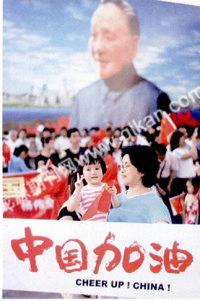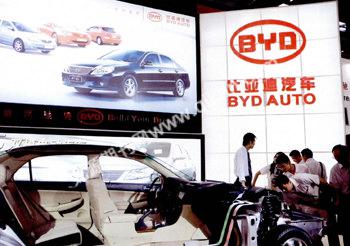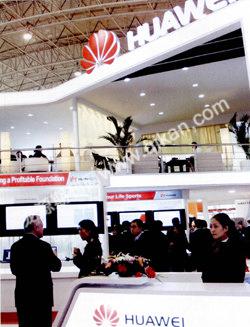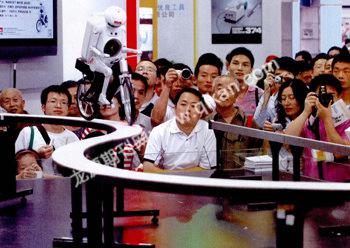Shenzhen:Lodestar of China’s Reform and Opening-up
By WU SAIFENG,SONG XIAOGU & ZENG BO
THE Third Plenary Session of the 11th Central Committee of the CPC in 1978 has always been regarded as the starting point of Chinas reform and opening-up drive. Since there was no previous development model to follow and most Chinese people were fettered by old conventions, the Chinese government decided to set up four experimental Special Economic Zones (SEZs) in the coastal cities of Shenzhen, Zhuhai and Shantou in Guangdong Province, and Xiamen in Fujian Province, in an attempt to find a suitable way to build socialism with Chinese characteristics.
Shenzhen Special Economic Zone was one of the earliest SEZs to open to the outside world. The whole process of its foundation, development and final success shows its peoples pioneering spirit and bold moves under the leadership of the CPC. And Shenzhens success as a pilot city serves as a guide in Chinas reform and opening-up.

Initiation of a Success Story
It was the spring of 1979, a few months after the Third Plenary Session of the 11th Central Committee of the CPCconcluded in Beijing.
Xi Zhongxun, secretary of the Guangdong provincial committee of the CPC and Yang Shangkun, Wu Nansheng and other officials under Xis leadership were ambitious and ready for the reforms. Their sharp minds told them that, “It is time to free people from old ideas and embrace a great economic growth.”
After making a full analysis of Guangdongs advantages – primarily its geographic closeness to Hong Kong and Macao and the kinship of local residents with the diasporic Chinese community, facilitating easy access to the outside world – Xi proposed to the CPC central committee that they make use of the positive domestic and international environment and Guangdongs advantages, and let the province take the lead in trial economic reforms.
On April 8, 1979, Xi delivered a speech on the work conference of the CPC central committee. On behalf of the Guangdong provincial committee of the CPC, he requested the central government grant preferential policies for Guangdongs reform and opening-up, and delegate powers to Guangdongs government so that the province could boldly take the first steps. He suggested setting up some special zones in coastal regions near Hong Kong and Macao, especially for exchange and cooperation with foreign countries and to attract foreign investments. He believed that Guangdong would develop rapidly by relying on its advantageous location.
He reported the idea to Deng Xiao-ping, widely known as the principal decision-maker in the establishment of SEZs. After listening to Xis report, Deng said: “Chinas reform and opening-up should be initiated in southeast coastal regions. The southeast coastal regions reform and opening-up should be initiated in Guangdong and Fujian. And Guangdongs reform and opening-up should start with an experimental plot...... You can mark out a piece of land and call it a special zone. The central government has no money, so you should do this by relying on your own resources.” The comment later made Chinese history.
From that point these reforming pioneers never stopped their innovation and hard work. Nowadays, few people can remember the name “Baoan.” In January 1979, Baoan County was renamed Shenzhen. On July 2, 1979, Yuan Geng, executive vice board chairman of China Merchants Group, the Ministry of Communications business arm in Hong Kong, led locals to reclaim land from the sea and founded the Shekou Industrial Zone in Nanshan District, Shenzhen, a move that marked the start of Chinas economic reforms and a turning point in Chinas economic growth.
The speedy construction of Shenzhen Special Economic Zone represents something of a miracle. In the early period, every Shenzhen resident worked under the slogan, “Time is money and efficiency is life,” as they engaged in large-scale construction of the citys infrastructure. The building of the National Trade Plaza was the pride of Shenzhen, because the builders set a record by “completing one story in three days,” a fitting symbol of the “Shenzhen tempo.”
In the decade from 1979 to 1989, Shenzhens GDP enjoyed a 35 percent average growth, unprecedented not only in China, but anywhere in the world. As early as 1984, Deng Xiao- ping openly confirmed the success of the Shenzhen experiment. Soon after that, the Chinese government expanded reforms from the four SEZs to 14 port cities in Chinas coastal area, based on Shenzhens experience.

Because Shenzhen was an experimental area, the central government lent strong support to the city and granted many preferential policies. In 1988, the State Council gave approval for Shenzhen, along with some other major cities, to be listed as independent entities in the state development plan, meaning these cities were given the rights of provincial-level economic administrations.
However, due to the backward legal system in China at that time, more and more things required control and regulation. “Unregulated” market operations worried the government, ordinary people and foreign investors as they impeded the newly emerging economy. After more than a years arduous work, in July 1992 the Standing Committee of the Shenzhen Municipal Peoples Congress and the Shenzhen Municipal Peoples Government were given the right by the Standing Committee of the National Peoples Congress (NPC) to draft local laws and set local regulations.
While formulating local laws, Shenzhen legislators paid much attention to laws in other countries, as well as Shenzhens local conditions. The laws and regulations set for Shenzhen covered five areas: regulating the behavior of individual traders and trade organizations, cultivating the market and the market system, encouraging fair competition, enhancing management of intermediary institutions, and establishing and improving a social security system. Authorities also learned from Hong Kong property management and set regulations for residential areas in Shenzhen. They advocated that house owners and professionals working in property management companies should deal with housing management together. They also decided to establish residents committees, assisting property management companies to better manage communities. Their new management methods were appraised and supported by the Ministry of Construction (now the Ministry of Housing and Urban-Rural Development).
By the end of June 2002, the Standing Committee of the Shenzhen Municipal Peoples Congress had formulated 191 laws and regulations (including 56 that have been revised or abolished). Of these, 185 were specially created for the Shenzhen Special Economic Zone. One-third were newly formulated and filled gaps in national legislation, one-third were laws revised and improved to better suit the practical needs of the SEZs development, and the remaining one-third were created specifically to enhance administration, improve the legal system and meet demands in environmental protection, city planning and cultural and ethical progress.
However, like any reforms, the process of change in Shenzhen Special Economic Zone has been full of ups and downs. From the late 1980s to the early 1990s, the dramatic changes in world politics and the global economic situation aroused discussion in China about whether the reform and opening-up process was socialist or capitalist. At the critical moment, Deng Xiaoping, chief designer of Chinas reform and opening-up policy, again affirmed the achievements and explorations of the special economic zone. When Deng inspected Shenzhen for the second time in 1992, he confirmed the socialist nature of the zone and Shenzhens audacity in blazing a trail.
Dengs two inspections of Shenzhen not only greatly inspired Chinese people who supported his policy, but also directly propelled the course of reform and opening-up, generating a “Shenzhen fever.” The accomplishments and experience of Shenzhen were widely covered in the media. People from China and abroad visited in an endless stream, and millions swarmed to the city to carve out careers.

Pioneering Upgrading
When former Chinese president Jiang Zemin inspected Shenzhen in 1994, he encouraged the city to “enhance its innovative advantage and strive for further improvement.” Thus, Shenzhen initiated its “second pioneering period” in 1995.
With economic reform and opening-up rolled out across the entire country, Shenzhens formerly “special” policy prevailed throughout China. Shenzhen decided to implement “three fundamental changes” – from a planned economy to a socialist market economy, from an extensive to an intensive growth mode, and from reliance on special policy support to reliance on heightened inner strength and innovation advantages.
In 2000, the city set a goal of “building innovation advantages to achieve modernization,” striving to maintain its superiority in creativity, opening-up, industrial upgrading and legal construction, and build Shenzhen into a model of socialism with Chinese characteristics. Meanwhile, its reforms went deeper as regards the systems of ownership, state-owned assets management, pricing, market construction, administrative approval, social security and anti-corruption.
Through industrial adjustment, three pillar industries of high technology, modern logistics and finance took shape, and they sustained Shenzhens continued annual economic growth of around 20 percent. Large numbers of hi-tech enterprises like Huawei, ZTE and BYD successfully won international recognition.
In order to further the transformation of scientific and technological achievements into practical productive forces, Shenzhen held the first China Hi-tech Fair in 1999. After ten years of development, the fair has become the citys business card, establishing Shenzhen as the leader of hi-tech industries in China, drawing business adventurers from all over the country.
When Chinese president Hu Jintao inspected Shenzhen in 2003, he put forward an instruction that Shenzhen should quicken and coordinate its development. In January 2005, Shenzhen decided to take command of the overall situation of economic construction in light of the scientific concept of development, and build “a harmonious Shenzhen with efficiency.”

After 27 years of development, Shenzhens exploitable land has shrunk while the demands on energy resources have increased as the population and industry have grown. Confronted with such a situation, the city changed its development mode to efficient growth. In order to shore up its position as a new city of independent innovation, Shenzhen has vigorously developed the cultural industry as the fourth pillar of the local economy.
Sound cultural development has changed Shenzhen from a “cultural desert” to a “cultural oasis.” Activities and sites like the culture expo, reading month and the citizens lecture hall have become the citys cultural brands, while slogans like the “city of libraries” and the “city of piano” have developed the citys cultural taste. Compared to the initial stages of reform and opening-up, the morale and ethos of the Shenzhen people are greatly changed.
In 2007, Shenzhens GDP was RMB 676.541 billion and its export value was US $168.493 billion, placing it first among big and medium-sized cities in China for the 15th successive year. Moreover, its per capita GDP was the first among big Chinese cities to surpass US $10,000. In terms of city construction, Shenzhen is Chinas first example of an “ecological garden city.”
Building a City of
Innovation
In June 2008, Shenzhen was approved by the central government as the first and sole experimental unit for the construction of innovative cities. On September 23, Shenzhen convened a meeting to accelerate its construction of an innovative city by developing new and high technology industries and enhancing independent innovation. The move was a celebration of the 28th anniversary of the founding of Shenzhen Special Economic Zone and the 30th anniversary of Chinas reform and opening-up. Shenzhen once again stands at a new historic starting point, and has sounded the clarion call for a national campaign of building innovative cities.
In the past two years, the central authorities and relevant ministries and commissions have placed great hope on Shenzhen for its role in independent innovation. Hu Jintao, general secretary of the Central Committee of the Communist Party of China (CPC), said in his report on the 17th CPC National Congress: “The special economic zones should better play their important roles in reform and opening-up and in independent innovation.”
During his inspection tour of Shenzhen three years ago, Premier Wen Jiabao demanded that the city should increase its ability to innovate independently. Shenzhen Special Economic Zone should be built into an important new and high technology industrial base and a national innovative city, featuring a special innovative capability and an especially excellent innovative environment.
All this has greatly inspired Shenzhen, pointing out the direction of its future development. In April 2006, the municipal government submitted a proposal to the National Development and Reform Commission soliciting its support and cooperation in jointly building Shenzhen into an innovative city.
In March 2008, Shenzhen Mayor Xu Zongheng went to Beijing to report on the basic conditions of Shenzhens drive to build a national innovative city and the Shenzhen-Hong Kong Innovative Circle to the National Development and Reform Commission. On June 12, 2008, the commission issued a document approving Shenzhen as an experimental unit for the building of a national innovative city. “The designation of Shenzhen as an experimental unit has given the city a new historic mission and the task of acting as a trailblazer in the new century,” said Xu Qin, executive deputy mayor of Shenzhen.
For a decade, the Shenzhen government has taken significant steps to promote independent innovation and develop new and high technology industries. In 1998 Shenzhen promulgated a 22-article local decree to support the development of new and high technologies. In 2006, Shenzhen issued new guidelines to “practice a new strategy of independent innovation and build a national innovative city.” All in all, Shenzhen has promulgated more than 30 relevant policies and measures.
“To achieve sustainable and rapid economic and social development, the key lies in further expanding development space and increasing the innovative vitality and sustainability of new and high technology industries. Independent innovation will be the only option for Shenzhen to change its development mode,” said Liu Zhongpu, director of the Shenzhen Municipal Bureau of Science, Technology andInformation.
Promulgating the general plan and supportive policies for building a national innovative city will be the most forceful measure to push Shenzhen into a new mode of development. On September 23, 2008, Shenzhen issued four documents concerning the building of a national innovative city, including “The Overall Planning of Shenzhen in Building a National Innovative City (2008-2015).” “This will greatly promote independent innovation and Shenzhens new and high technology industries, and enhance our future social and economic development,” commented a leader of a technological enterprise.
After years of effort in developing new and high technology industries and promoting independent innovation, Shenzhen has the following advantages in building a national innovative city.
First, it has an industrial foundation and innovative environment. For three years running Shenzhen has ranked first in its high-technology production value (RMB 700 billion) among Chinas large and medium-sized cities. It has more than 30,000 scientific-technological enterprises, and of these 3,200 have been verified as new and high technology enterprises. In addition, the proportion of its production value of new and high technology to which it has independent intellectual property rights exceeds 58 percent.
Second, in recent years the global industrial structure has been shifting in terms of distribution costs, and Shenzhen hopes to become an important recipient of more international innovation resources. A large number of leading enterprises in Shenzhen, such as Huawei, ZTE and BYD, have considerable international competitiveness through exploring overseas markets.
In addition, Shenzhen has signed agreements on innovation with the Ministry of Information Industry and the Hong Kong Special Administrative Region government, so it will get powerful support in terms of policies.
“We will strive to build Shenzhen into a national innovative city within five to 10 years, featuring a complete innovative system, numerous innovative talents, many innovative enterprises, active innovative investments, an excellent comprehensive environment, and a developed hi-tech industry,” said Deputy Mayor Xu Qin. According to the municipal plan, by 2010 Shenzhens R & D investment will make up four percent of its GDP, the output value of hi-tech products with independent intellectual property rights will make up 65 percent of the output value of all hi-tech products, and the added-value of hi-tech products will make up 35 percent of Shenzhens GDP.
The Shenzhen Experience
Shenzhen evolved from a small fishing village to a modern city within 30 years. What is Shenzhens experience?
The key is Shenzhens audacity in breaking the ties of the traditional planned economy and economic, technological and administrative innovations. As the experimental area for the reforms, Shenzhen broke down old conventions and took many “first steps” for China. Shenzhen conducted the first land use rights auction, set up the first foreign exchange center, instituted a “giving more pay for more work” system, and abolished the system of lifelong official tenure under slogans like “Breaking the iron rice bowl (equilibrium) and the iron armchair (lifelong tenure).”
In addition, it initiated ownership reform in China and encouraged state-owned enterprises to undertake shareholding reforms. It introduced financial management reform, allowed the entry of foreign capital and banks, established a stock market, promoted the free pricing system, and adjusted housing policy. It also established the countrys first bonded industrial park and the first sci-tech industrial park. Shenzhens exploration and practice of innovation in economic development has made a vital contribution to the building of socialism with Chinese characteristics.
Shenzhens innovations have created tremendous material wealth. From 1979 to 2007, its GDP skyrocketed from RMB 196 million to RMB 676.541 billion, and the GDP per capita from RMB 606 to US $10,628. Its annual economic growth for the period averaged 28 percent.
From 1979 to 2007, Shenzhen spent a total of RMB 456.85 billion on infrastructure and urban construction. The city proper now covers 719.88 sq km. Meanwhile, modern logistics have quickly developed. As one of the major logistics and transport hubs in China, the city attracts commodities, laborers and advanced technology from all over the country. Service industries such as IT, finance and tourism have also got a boost. Nowadays, Shenzhen plays an important role in stimulating the surrounding areas in economic development.
Thanks to the advantages of the special economic zone and innovation in the market economy, Shenzhen people have made a significant contribution to Chinas modernization and building of socialism with Chinese characteristics. The city has contributed more than RMB 700 billion in tax to the central budget over the past 30 years. In the meantime, based on a spirit of mutual aid, Shenzhen has donated funds and material worth about RMB 7.5 billion to 66 counties and cities in 10 provinces. In 2007, Shenzhen set up industrial parks in Chinas other regions to intensify cooperation in infrastructure, energy industry and services.
Being an export-oriented city, 60 percent of Shenzhens total industrial output value and export value are produced by enterprises operating with foreign investments. By the end of 2007, 148 of the worlds top 500 companies had invested in Shenzhen, through 272 projects. The citys total export value increased from US $9.3 million in 1979 to US $168.493 billion in 2007. Up to 50 percent of the people and 80 percent of the vehicles entering and exiting China do so from this coastal city. Over the past three decades, Shenzhen has significantly narrowed its gap with Hong Kong, laying an economic foundation for the establishment of the HK-Shenzhen megalopolis and further cooperation on both sides.
Innovation has also brought about spiritual wealth. As the city develops rapidly, people pay more attention to their inner world and spiritual well-being, and local officials are determined to build Shenzhen into a modern cultural city after their great success in boosting its economy. Tens of thousands of Shenzhen citizens join in voluntary activities to make society better, and many emulate their role models such as good policemen and judges, trying their best to help those in need.
With all these changes, the phenomenon of Shenzhen people “stealing” into Hong Kong has faded into a thing of the past. Instead numerous people from all over the country, including those from Hong Kong, have settled here and are proud to be Shenzhencitizens.
Shenzhens experience is, in the ultimate analysis, one of courage. A local citizen says: “Leaders innovation guides us in going forward.” Thirty years ago, Deng Xiaoping and the Chinese reformers raised the curtain of reform and opening-up in this small village. Without any precedent or theories to follow, Shenzhen forged a road towards a socialist market economy with Chinese characteristics. Thirty years experience has made the city a banner of Chinas reform and opening-up.

